Table of Contents
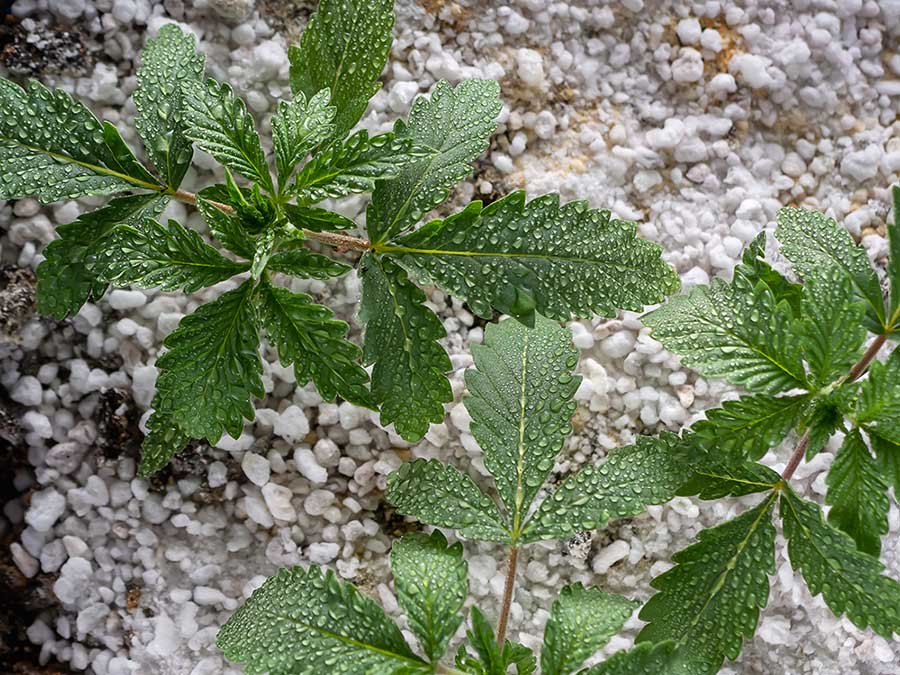
Are you new to cannabis cultivation? Did you ever ask yourself, what those Styrofoam-like pebbles peeking out of your friend’s marijuana garden are? Are you timid enough to ask him or her? Let me help you with your trouble and introduce you to one of gardening’s essential ingredient, “Perlite.” It is an airy, non-toxic, and easily handled medium that can enhance the growth of any marijuana plant. In the next paragraphs, you will be stumbling upon the vital information we have gathered.
Sit back and start the cerebral high with a mental clarity that lasts long as you focus on this article. Have a euphoric read!
Perlite is a type of volcanic rock, obsidian. It is inert in nature with a pH of 7.0. For a long time, this shiny black glass absorbed moisture from its environment. Once mined, it is crushed into small pieces. It is exposed to 850-900 Celsius of heat. The moisture inside evaporates, and the rock will expand hastily. And the result is a white popcorn-like lightweight substance that is occasionally called expanded pyrite or volcanic popcorn.
Industrial settings use this as a mix to lightweight plasters, ceiling tiles, masonry, or as an insulator. It is a famed filtration agent used for filtering grain and other solids out of beer. It is also used in the biochemical industry.
The chemical composition of Perlite varies slightly. Typically it consists of 70 to 75% silicon dioxide. Other chemicals include aluminum oxide, sodium oxide, potassium oxide, iron oxide, magnesium oxide, and calcium oxide. These are natural minerals that are often part of other soil blends.
In the gardening world, it is the most common soil amendment commercially available. It is paired with soil or coco mix. It increases the draining ability of the plant, increases root penetration, and prevent unnecessary nutrient build-up. This results in faster and healthier plant growth.
Soil, peat moss, coco mulch have a tendency to compact. As the media is watered, each particle gets closer to each other, thus shrinking air pores. As a consequence, water will not drain very well, and air will not easily penetrate. A decrease in plant vigor and production will occur.
Due to a lack of oxygen and high moisture retention, roots may fail to grow. They will be more susceptible to diseases. Lichen may spurt on your medium if it remains wet most of the time.
Be a keen observer in your garden. If by any time, you notice that the medium you are using, may it be soil, hydroponics, or coco mix, is becoming compacted or hard and seems to drain out water slowly, you may go and buy yourself some Perlite.
Depending on your growing needs, you can choose from coarse grade or fine grade perlite. The former has advanced drainability and less prone to be blown away by the wind. While the latter is useful for retaining water. The quality and where you get your perlite supplies are factors you have to think about when acquiring perlite.
You have to buy high-quality perlite from a trusted store or supplier. Go for a manufacturer that is highly knowledgeable and has mastery over the product they are selling. You can ask for free samples before purchasing. Find out where the product is produced. This affects the price and delivery time.
Perlite is often used as an addendum to grow mediums when cultivating marijuana. You can combine it with organic soil or coco coir. It also goes well with hydroponics. For growing marijuana, fine perlite is the best option.
Most nurseries add perlite to the soil to make handling easier as weight is decreased. If you tend to move your plant a lot to adjust to lighting conditions, this material is perfect for you. It also acts as an insulator that reduces relatively high ambient air temperatures from penetrating the soil.
Perlite is inorganic; thus, there is no risk of introducing harmful fungi, pests, or bacteria. It will not decay or shatter. It is clean, sterile, and poses no harm to the plant.
Perlite and Vermiculite are best used in conjunction with each other. Perlite does not hold more than 1 percent moisture, and Vermiculite holds more water. It is very moisture retentive. It holds a 30 to 50 percent of its volume in water and 200 to 300 percent of its weight. With a balanced 50:50 ratio with Perlite, it will provide media porosity and air. It also prevents plant drought.
Perlite’s dust is a mess. Though not required, you might want to rinse off the dust before mixing it in your hydro approach. It blocks the tubes and pumps and is detrimental to your health. Listed as a nuisance dust, it can irritate your eyes, mouth, throat, and lungs. It contains alumina silicate that can worsen asthma and with chronic exposure, cause Silicosis (a non-cancerous disease).
Use personal protective measures such as goggles and masks to prevent this. Some cultivators are wise enough to fill the bags with water first before opening to remove dust particles.
If you leave the plant unattended for a long period of time, then perlite is not for you. It is dependent on your input and will not thrive well.
You cannot use Perlite in grow systems where flooding is common. Perlite is inappropriate for deepwater cultivation and ebb and flow. The particles may float and travel towards the surface of growing pots causing uneven distribution.
Perlite can be used solo in hydroponics, or you can combine it with soil or coco coir.
Most sold mediums consist of perlite content. If not, you can put 10 to 50% by volume of perlite. Perlite volume provides a ratio for moisture retention and runoff.
For coco coir and soil, you have to add 10-50% of perlite volume. For a modest nutrient cycle, aim for a 10 to 20%. If you want to go heavy with the nutrients, you can mix 30 to 50% to counter the risk of a nutrient lockout.
Perlite doesn’t hold water. That alone makes it perfect for the hydroponic method of gardening. It has a neutral pH, non-reacting to water, or liquid nutrients used within the system. A basic reminder, though, is to use it within a hydroponic system in which the plant roots continually stay wet.
One of the most favored ways to use it in hydroponics is in propagating plants using cuttings. Coarse perlite and its well-draining nature tend to provoke the roots to grow quickly as they search for nutrients and moisture hidden within the mineral base. Clonex, a rooting compound, can be utilized to stimulate the growth of your roots. Also, make sure that your cuttings are well-drained to prevent root rot.
If you’re planning to use perlite as a standalone media, drip systems, and bucket systems will operate better than ebb-and-flow systems. It poses a problem in ebb-and-flow systems or deep water culture. Naturally lightweight, perlite, and its high air content will float, and you don’t want them to be washed away by the current.
Another reminder, be cautious not to use perlite in aquaponics as the fish can breathe in the small particles, leading to its death.
If you buy a potting mix, it is a high chance that you find perlite as one of its ingredients. Its superb soil drainage capabilities make it highly in demand.
When you mix perlite in a container, balance it out with water-retaining and aerating materials. It can also be mixed with your regular garden soil but has less effect due to the increased volume of soil. If you have plants with special water needs, then perlite will be of great help. It won’t affect the pH of the soil since it is neutral. Much significantly, you will not find a finer soil aerator than perlite.
Perlite may be small and light, but it plays a heavy part in a cannabis grower’s world. You need to start using Perlite when you see your medium hardening and not draining properly. You can buy it in small bags or by bulk in most gardening stores. It is advantageous as it is mixed and matches with soil, coco coir, or goes solitary in hydroponics. You can pair it with Vermiculite for better water retention. It improves overall root growth as it aerates, drains, and retains enough moisture on the plant. Though with the disadvantages, the perks of perlite have more weight than its downside.
Using Perlite as your growth medium will inevitably enhance any Indica or Sativa plant growth. With its potency to bring about healthy growth, this brilliant white stone may be a future mainstay in your garden.
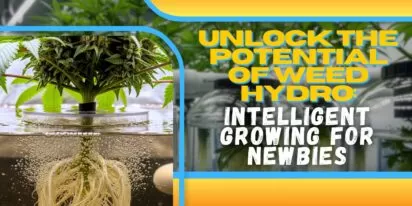
Curious about growing weed in a healthy, effective way? Welcome to the realm of weed hydro! This method uses water instead of soil, delivering n

Peyote Zkittlez is a unique cannabis strain that has quickly gained dedicated followers among enthusiasts and patients alike. Its parentage—Zk
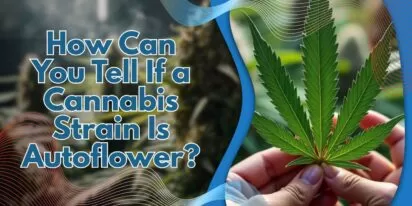
As growers, we want strains that work well, are strong, and are of good quality. Autoflowering cannabis strains are a big step forward for both
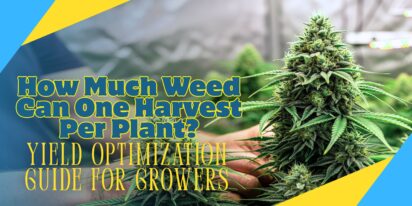
Pot growers always ask the same basic question: How much weed does a weed plant produce? The answer is complex and depends on a multitude of var

Ever had the room spin after a few hits? You're not alone. Figuring out how to prevent getting dizzy high can make your cannabis experience a wh
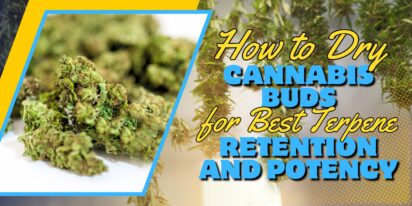
Drying cannabis properly is a critical process in preserving the plant's full aroma and flavor and its psychoactive abilities. Tampering with th

Ever caught yourself a bit too high and all of a sudden in need of being normal? Whether you're heading out for munchies or bumping into someone

Looking for sage advice on how not to get pinched with weed without batting an eye? Attempting to protect your stash from gossipy roommates, sno
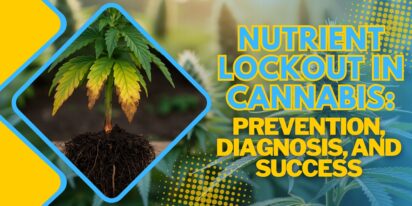
Nutrient lockout, also known as nutrient binding or chemical antagonism, is a significant issue in cannabis cultivation that negatively impacts
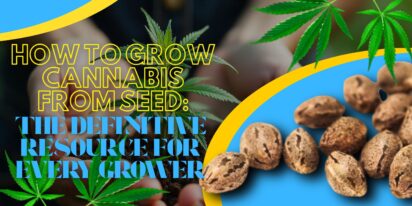
Germination is the most critical initial stage in growing healthy, high-quality cannabis plants. During germination, the dormant seed becomes a
Are You 18 Or Over?
By selecting “Continue”, you confirm that you are at least 18 years of age and legally permitted to access cannabis related content in your region.
By using Rocketseeds.com, you agree to our legal disclaimer.
Excellent blog here Also your website loads up very fast What web host are you using Can I get your affiliate link to your host I wish my web site loaded up as quickly as yours lol
Your writing is not only informative but also incredibly inspiring. You have a knack for sparking curiosity and encouraging critical thinking. Thank you for being such a positive influence!
Simply wish to say your article is as amazing The clearness in your post is just nice and i could assume youre an expert on this subject Well with your permission let me to grab your feed to keep updated with forthcoming post Thanks a million and please carry on the gratifying work
Somebody essentially lend a hand to make significantly articles Id state That is the very first time I frequented your website page and up to now I surprised with the research you made to make this actual submit amazing Wonderful task
Your blog is a beacon of light in the often murky waters of online content. Your thoughtful analysis and insightful commentary never fail to leave a lasting impression. Keep up the amazing work!
Thank you for the auspicious writeup It in fact was a amusement account it Look advanced to more added agreeable from you By the way how could we communicate
Your blog is a constant source of inspiration for me. Your passion for your subject matter shines through in every post, and it’s clear that you genuinely care about making a positive impact on your readers.
Your blog is a constant source of inspiration for me. Your passion for your subject matter is palpable, and it’s clear that you pour your heart and soul into every post. Keep up the incredible work!
Your articles never fail to captivate me. Each one is a testament to your expertise and dedication to your craft. Thank you for sharing your wisdom with the world.
Your blog is a testament to your dedication to your craft. Your commitment to excellence is evident in every aspect of your writing. Thank you for being such a positive influence in the online community.
Your writing has a way of resonating with me on a deep level. I appreciate the honesty and authenticity you bring to every post. Thank you for sharing your journey with us.
Your blog is a true gem in the world of online content. I’m continually impressed by the depth of your research and the clarity of your writing. Thank you for sharing your wisdom with us.
Hi i think that i saw you visited my web site thus i came to Return the favore Im attempting to find things to enhance my siteI suppose its ok to use a few of your ideas
Somebody essentially help to make significantly articles Id state This is the first time I frequented your web page and up to now I surprised with the research you made to make this actual post incredible Fantastic job
Usually I do not read article on blogs however I would like to say that this writeup very compelled me to take a look at and do so Your writing taste has been amazed me Thanks quite nice post
Your blog has quickly become one of my favorites. Your writing is both insightful and thought-provoking, and I always come away from your posts feeling inspired. Keep up the phenomenal work!
Every time I visit your website, I’m greeted with thought-provoking content and impeccable writing. You truly have a gift for articulating complex ideas in a clear and engaging manner.
Hey there You have done a fantastic job I will certainly digg it and personally recommend to my friends Im confident theyll be benefited from this site
I have read some excellent stuff here Definitely value bookmarking for revisiting I wonder how much effort you put to make the sort of excellent informative website
Nice blog here Also your site loads up very fast What host are you using Can I get your affiliate link to your host I wish my site loaded up as quickly as yours lol
What i do not understood is in truth how you are not actually a lot more smartlyliked than you may be now You are very intelligent You realize therefore significantly in the case of this topic produced me individually imagine it from numerous numerous angles Its like men and women dont seem to be fascinated until it is one thing to do with Woman gaga Your own stuffs nice All the time care for it up
Your blog is a beacon of light in the often murky waters of online content. Your thoughtful analysis and insightful commentary never fail to leave a lasting impression. Keep up the amazing work!
Your blog is a breath of fresh air in the often stagnant world of online content. Your thoughtful analysis and insightful commentary never fail to leave a lasting impression. Thank you for sharing your wisdom with us.
Your blog is a beacon of light in the often murky waters of online content. Your thoughtful analysis and insightful commentary never fail to leave a lasting impression. Keep up the amazing work!
Usually I do not read article on blogs however I would like to say that this writeup very compelled me to take a look at and do it Your writing style has been amazed me Thank you very nice article
Your writing has a way of resonating with me on a deep level. I appreciate the honesty and authenticity you bring to every post. Thank you for sharing your journey with us.
This hydroponics guide is quite the buzz, seriously! Who knew growing weed without dirt could be so complicated yet potentially rewarding? The breakdown of systems like DWC and NFT is helpful, though I suspect my cat might confuse the air pump for a toy. The idea of cleaner buds is tempting, especially since explaining hydro weed to my non-growing friends might get messy. And the bit about potential dizziness from hydro weed? Perfect, now I have an excuse for why I always stumble a bit after a grow session. Still, the promise of faster grows and higher yields is hard to ignore, even if it means more trips to the pH meter than to the coffee shop. Overall, a cultivating read for the curious grower!